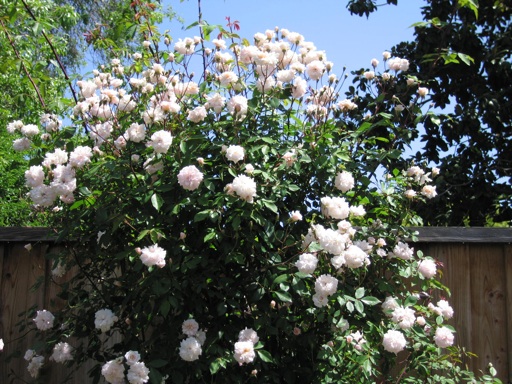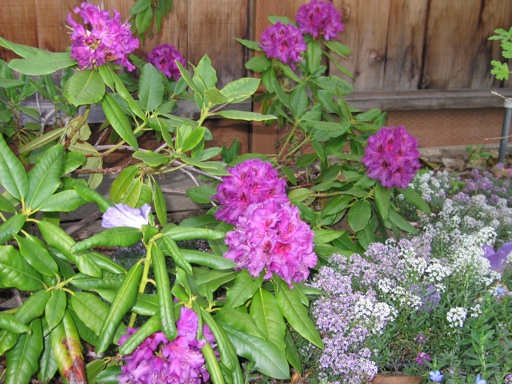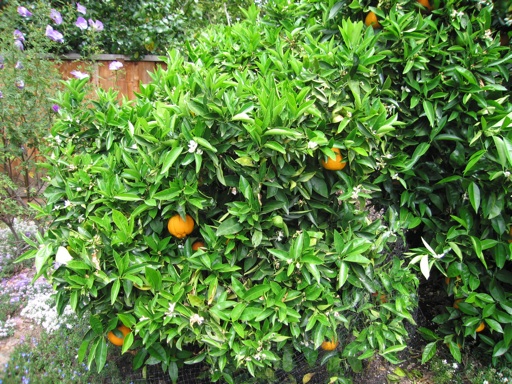


These are more pictures of flowers that are blooming in our garden this spring. The first picture is of a Cecil Brunner climbing rose. Each spring, they are filled with hundreds of cute miniature flowers for a few weeks. But they only bloom once a year. The rest of the year they grow profusely. A bit too profusely in my opinion. I stopped watering them two years ago to try to stunt their growth. But it didn’t work. They still grow dozens of new thorny vines every few months during the growing season. Pruning the new growth has only slowed them down a little. I planted them next to the fence, so they might be getting water from the neighbor’s yard. I am probably going to cut them back severely in a few weeks.
The second picture is a purple rhododendron. I have had this bush about 6 years, and it has bloomed reliably every year. I really love of the color of its flowers.
Rhododendrons like shade in warm climates, acidic soil, and lots of water. Ours is planted in partial shade, although our soil is not particularly acidic. I give it azalea/rhododendron fertilizer once a year in the spring and that has be enough to get it to flower.
The last picture is group of lavender bearded irises. These irises were here when I moved into the house. I almost never water or fertilize them, and they have produced very few blooms. This year they have more flowers than they have ever had. In our climate, we get very little rain from May through October. Bearded irises are supposed to be drought tolerant. I am not sure if they don’t bloom much because they are not getting enough water or fertilizer or both.
May 03 2009 | Flowers and Irises and Rhododendron and Roses | Comments Off on More spring flowers

We are lucky enough to live in a house that has an established navel orange bush (see picture). It was planted by one of the previous owners. This bush must be over 20 years old given the girth of its trunk.
Our navel orange bush produces the best tasting oranges I have ever eaten. The flesh of the oranges is soft and tender, unlike the tough fleshed oranges I typically buy in the supermarket. And the flavor is superb. They are juicy, with a nice sweet-tart orange flavor. Although I cannot be sure what type of navel it is, I believe it is a Washington navel given the high quality of the fruit. Washington (Bahia) navel is generally considered to be the best tasting orange.
Although navel oranges are known for ripening in the winter, our navel oranges are ripe now, in April and May. Our climate is probably too cool to stimulate winter ripening, but it appears to be warm enough to generate some very good fruit. Our summer highs average in the high 70s to low 80s, and our winter highs average in the 50s.
The first two years I lived in this house, the leaves of this bush would turn yellow each spring. Then, I learned that yellowing leaves is typically a sign of a lack of nitrogen. Oranges need lots of nitrogen, particularly in the spring when they are growing and blooming. For the past several years, I have been fertilizing our two oranges (navel and valencia) once a month from February through July with a general purpose fertilizer, 16-16-16. The first of these three numbers indicates the percentage of nitrogen in the fertilizer.
I give each bush 3-4 cups in each application, because both of them are quite mature at this point. The result has been more blooms, more oranges, and beautiful dark green leaves throughout the spring and summer months.
Some of our neighbors have large orange trees. They never seem to fertilize them and yet they always look beautiful! I am not sure how they get away with neglecting these trees. Although, our bushes often have more oranges even though they are smaller. 😉
May 03 2009 | Oranges | Comments Off on Navel Orange Bush



